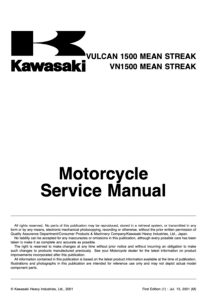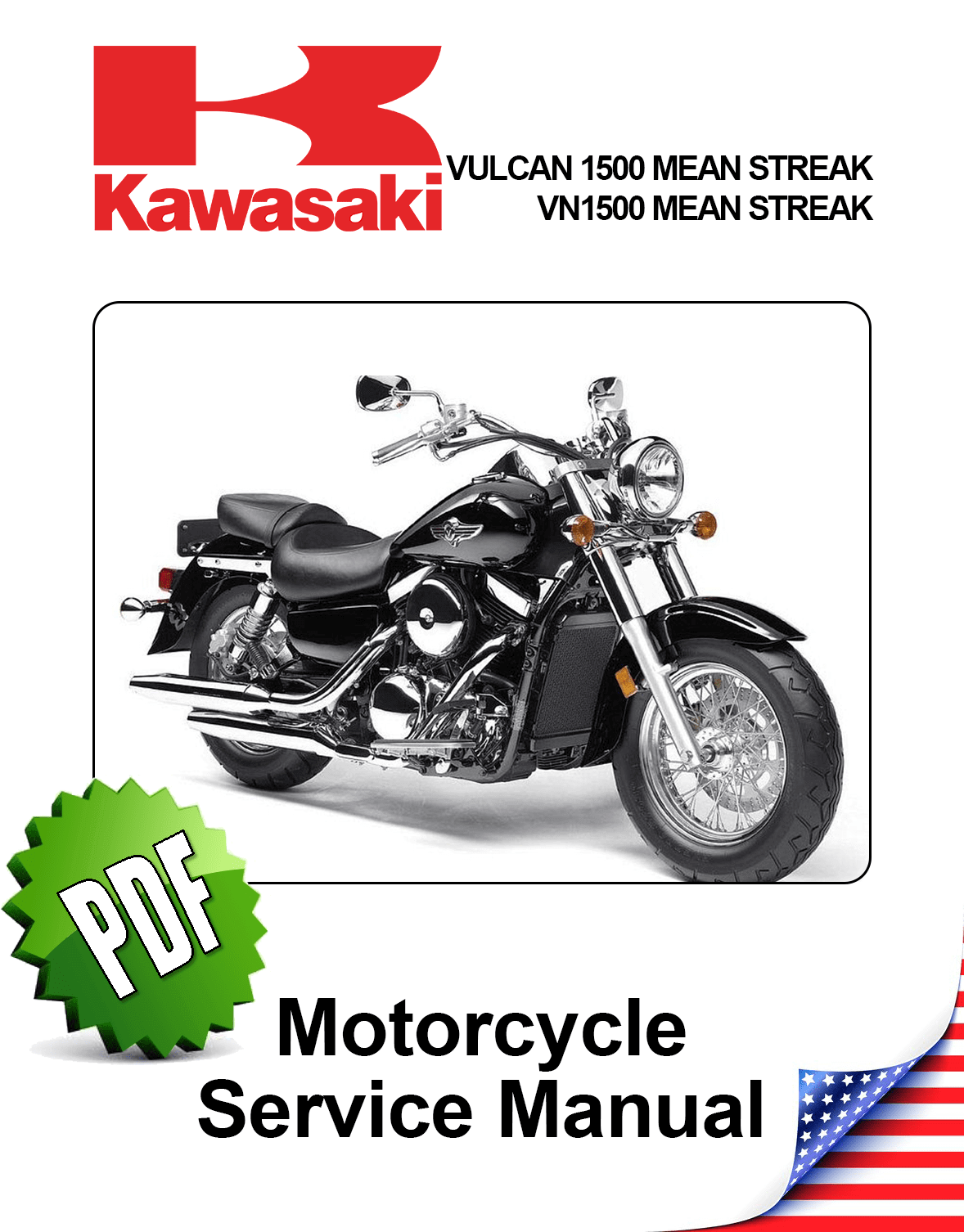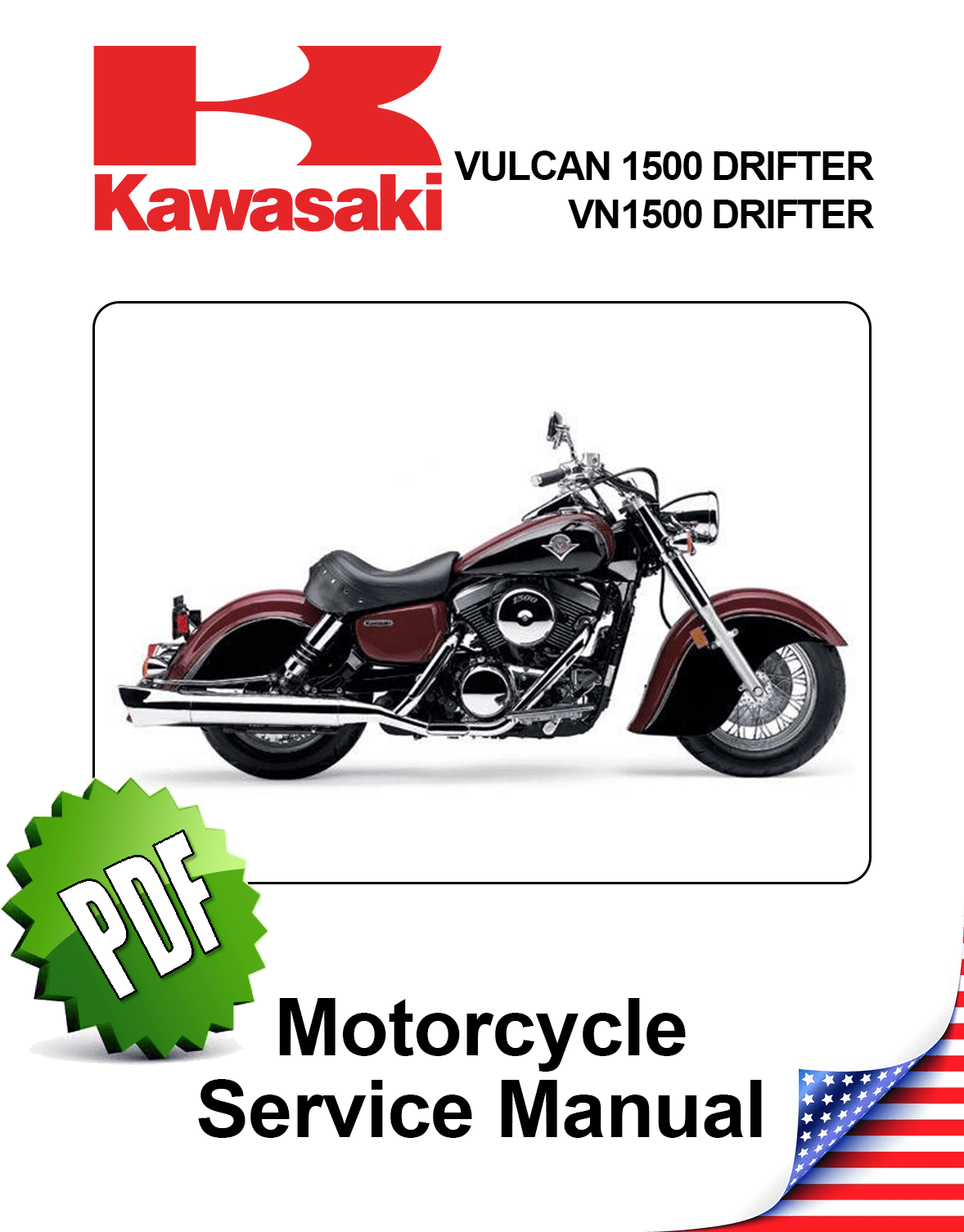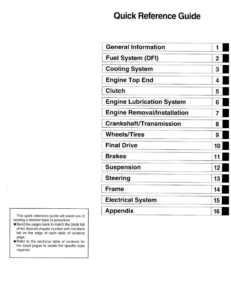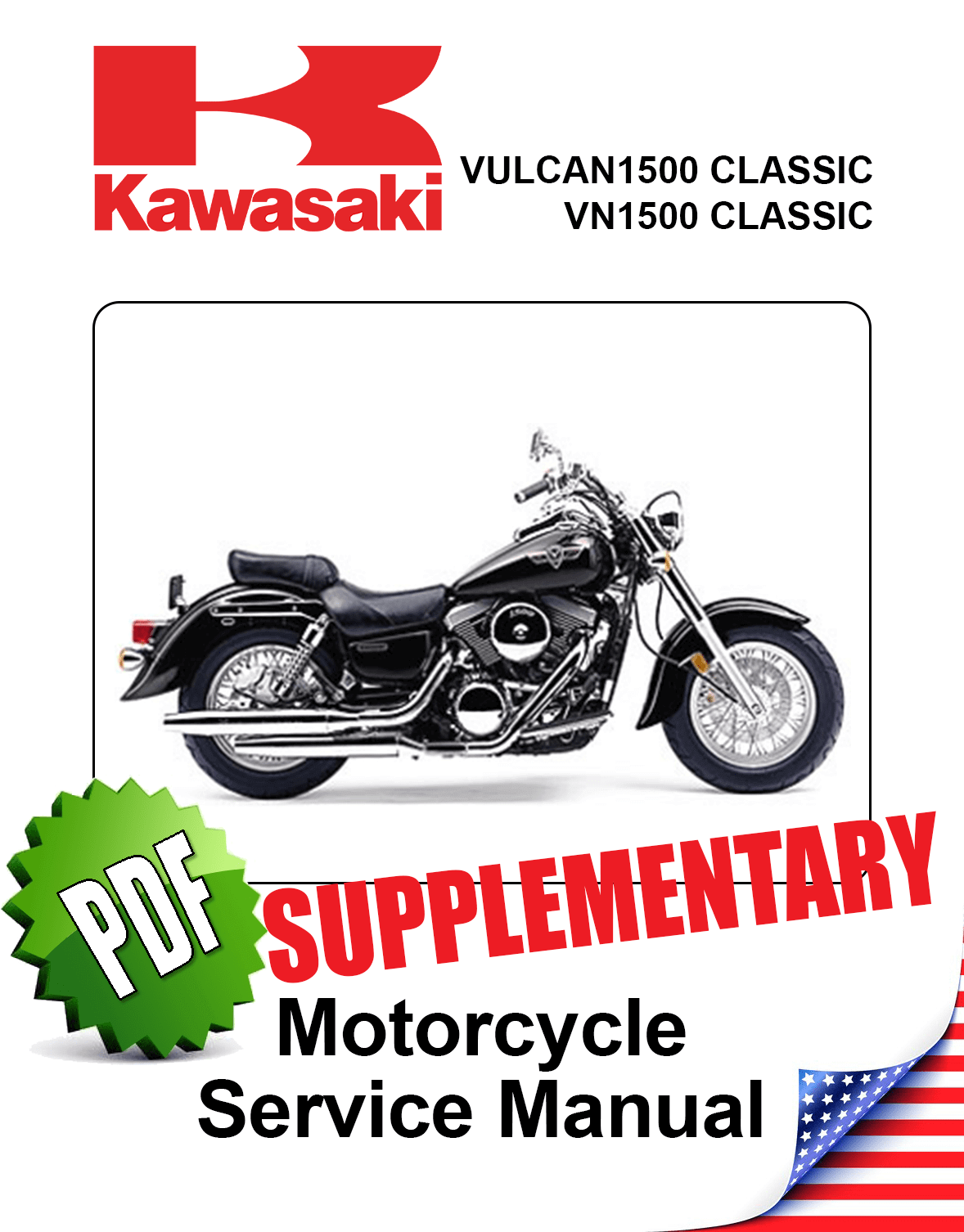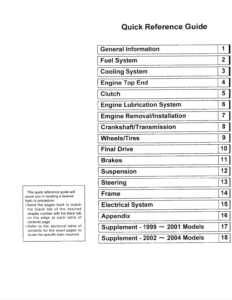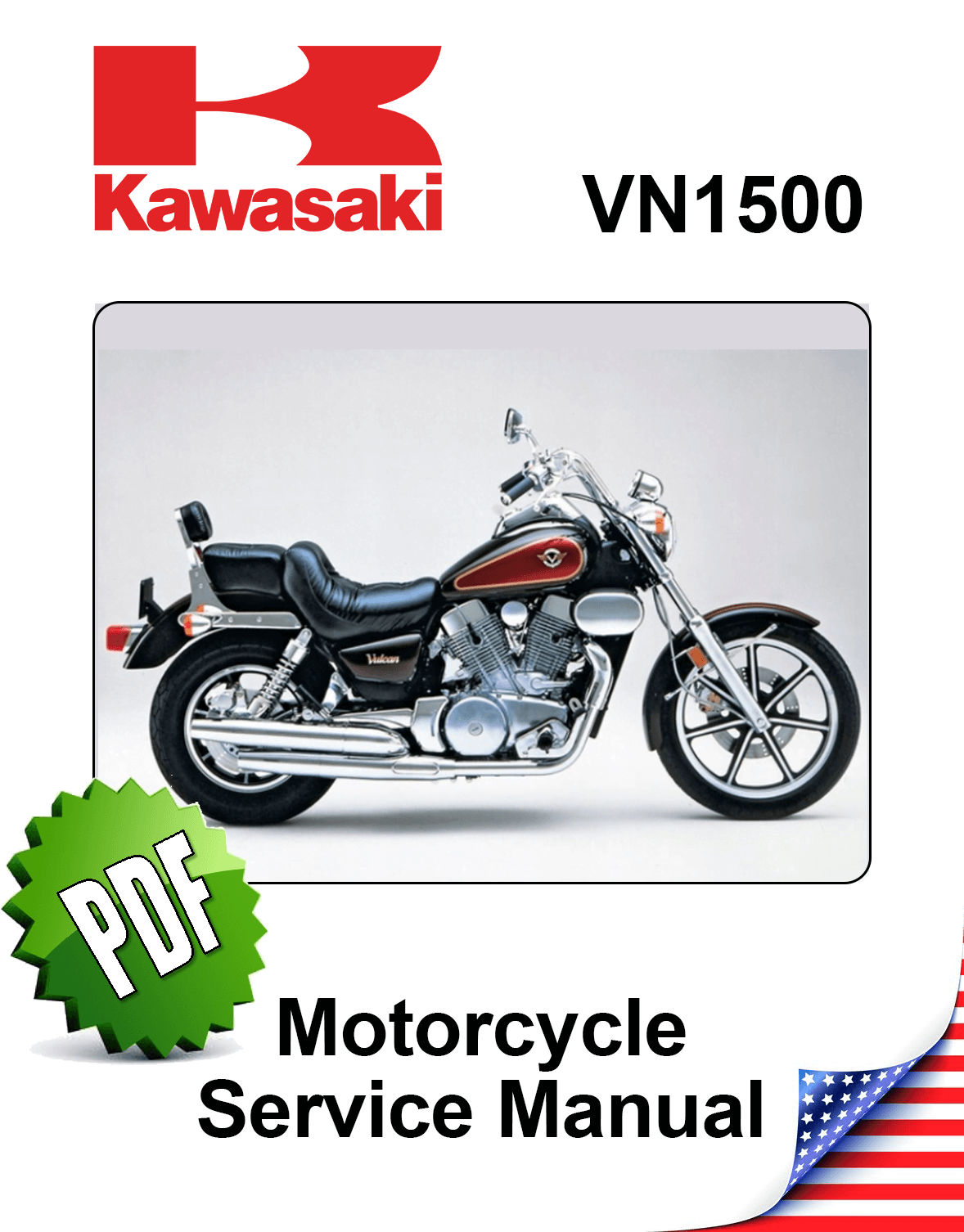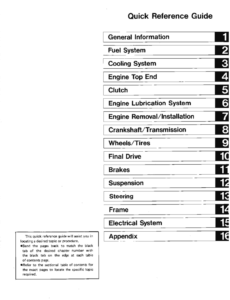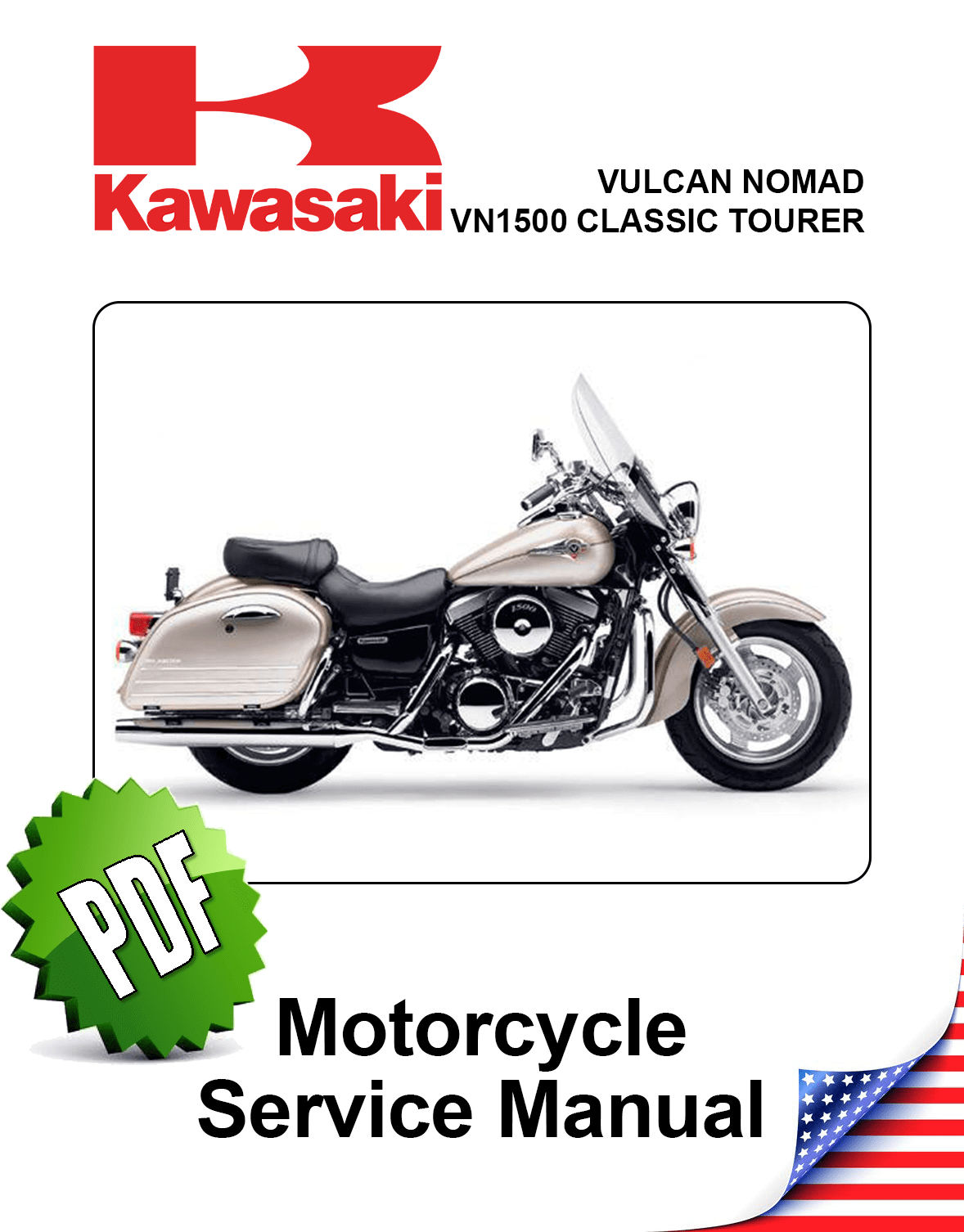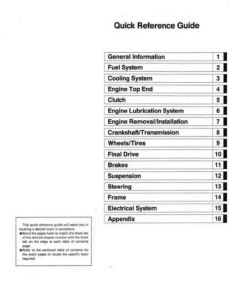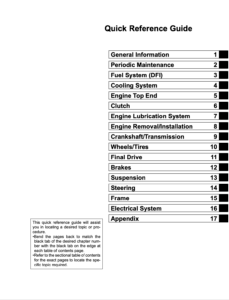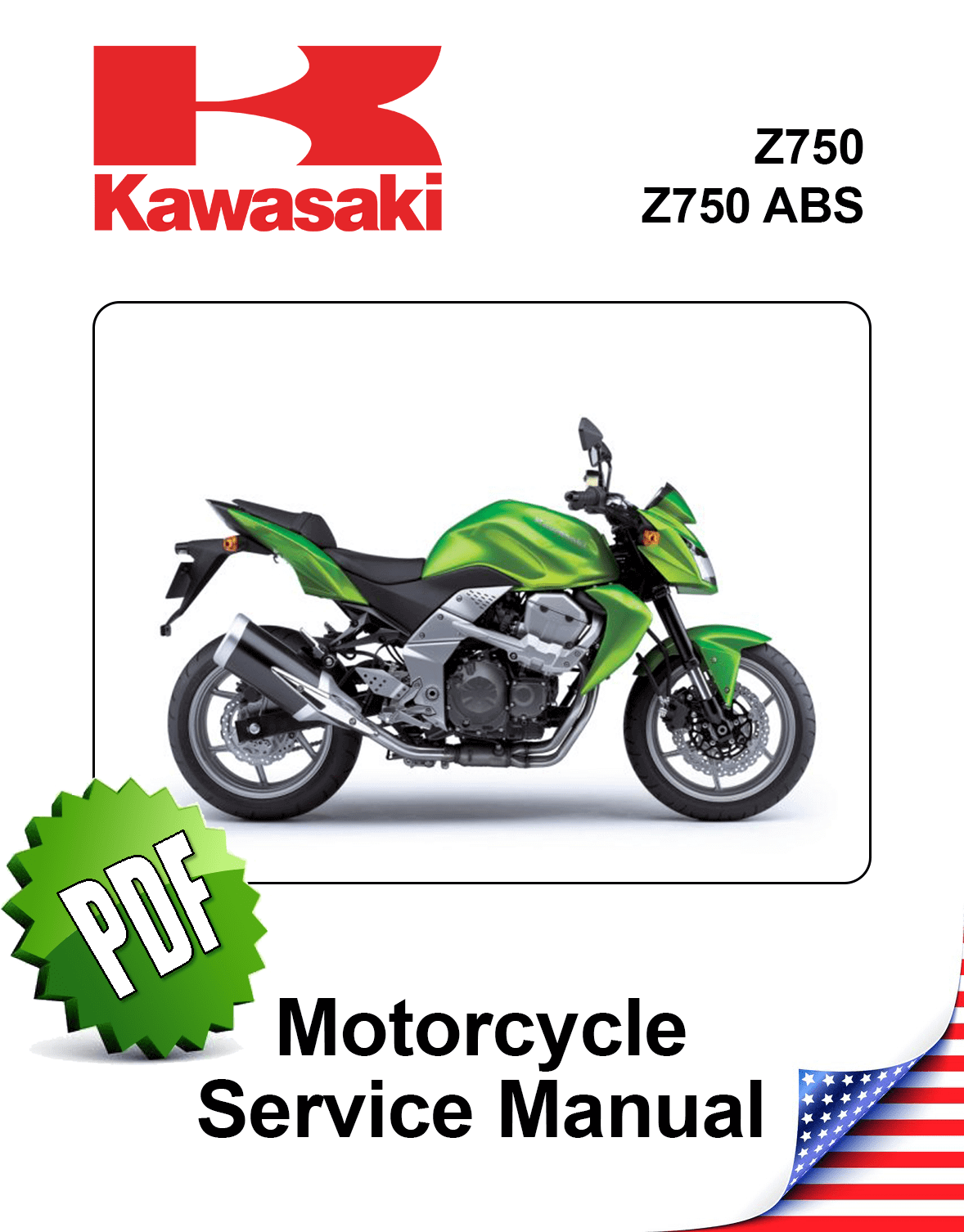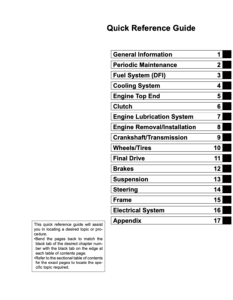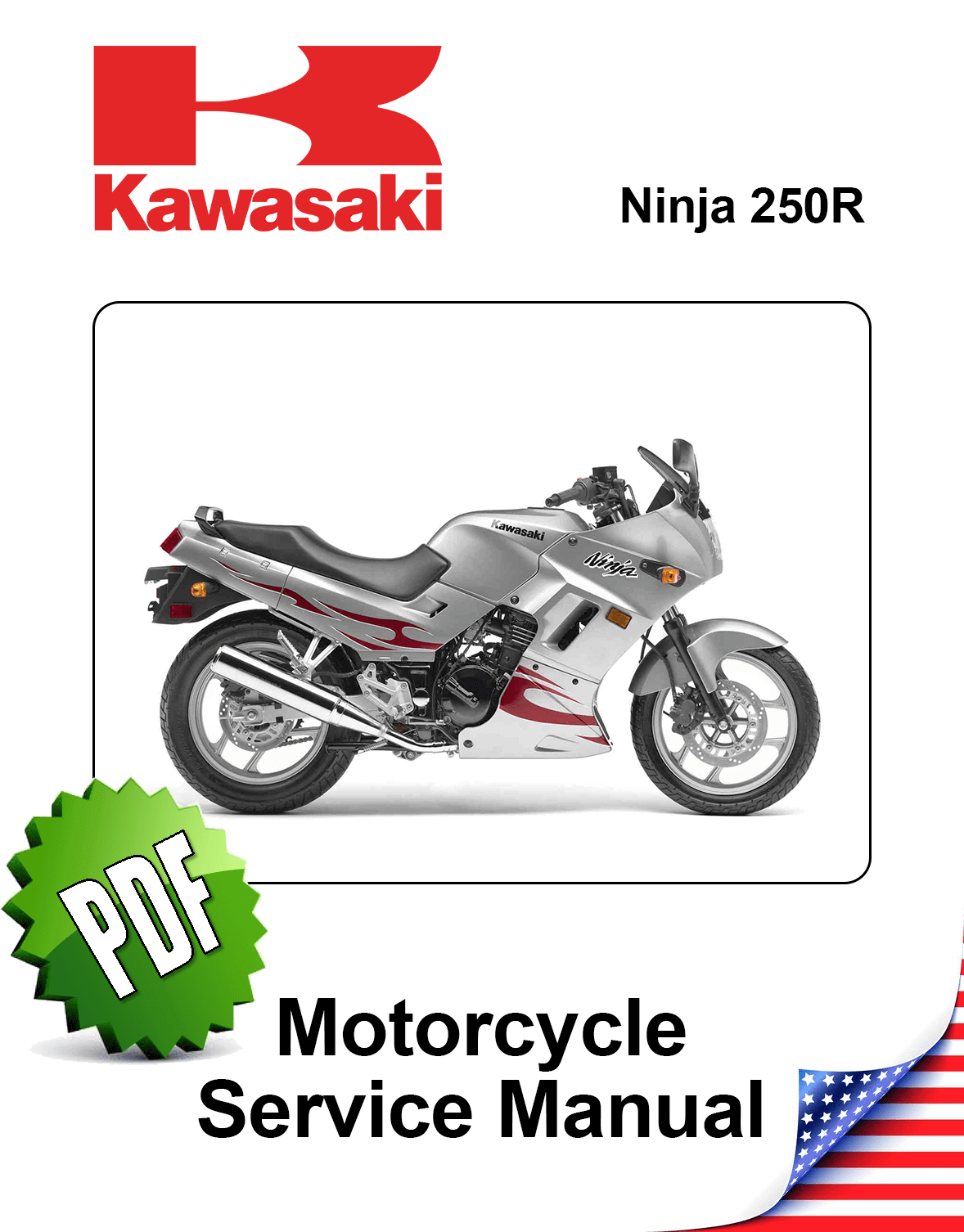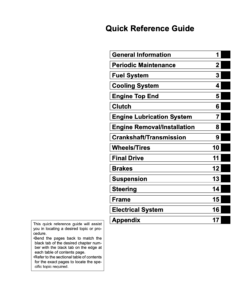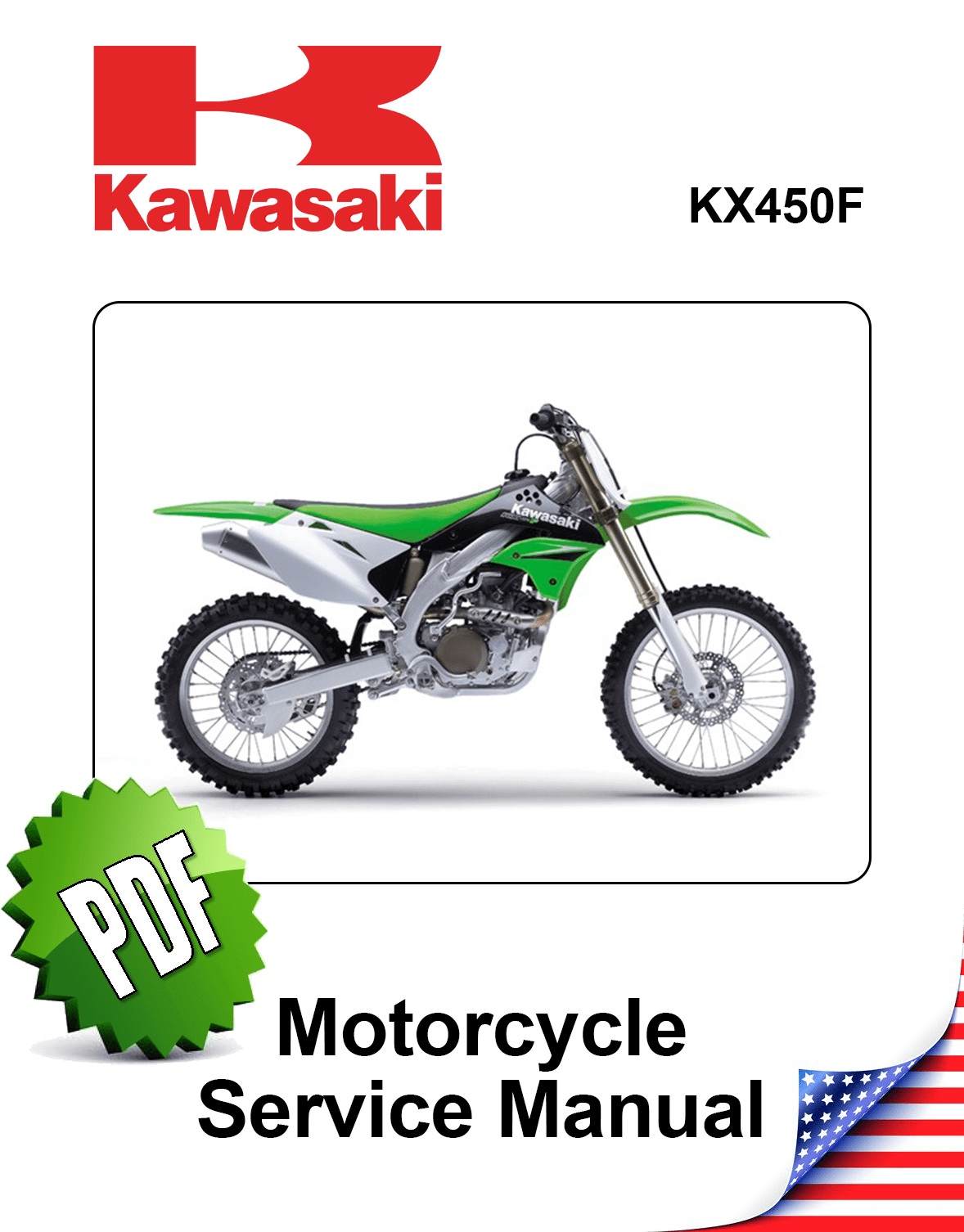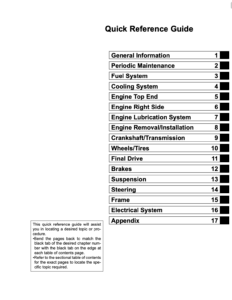Complete PDF version of the Service Manual for the Kawasaki Vulcan VN1500 Drifter. A MUST for every Drifter owner.
Download: Immediately after payment!
OEM Original factory workshop manual.
Models covered by this manual: 1999 to 2005
Number of pages: 481 pages
Table of contents:

This PDF repair manual can be downloaded right after the payment process in complete, on the device of your choice.
We do not offer printed manuals, for the following reasons:
- it is more eco-friendly to use a digital version
- your manual never gets dirty or greasy
- you can always choose to print the specific page(s) you need to work on your bike
- you receive your manual immediately after payment
- it is searchable

Kawasaki Vulcan VN1500 Drifter
The Kawasaki VN1500 Vulcan Drifter is a fuel-injected, shaft-driven, water-cooled cruiser motorcycle from the Kawasaki Vulcan range, inspired by the 1940s Indian Chief. Between 1999 and 2005, Kawasaki produced this model.
Ken Boyko, Don Emde, son of Indian legend Floyd Emde, and John Hoover of Kawasaki collaborated on the Drifter. Retro bikes were becoming popular, prompting the question, “What would a current, up-to-date Indian look like, and what type of technology would it have?” Denny Berg of Time Machines Inc. was hired to create such a machine. They handed him an early 1995 Classic and the artwork before letting him go.
The end result was a motorbike named the “Super Chief,” which was shown at various motorcycle events in 1996/97 and was such a popular with the riding public that Kawasaki took it to Japan and put it into production. They couldn’t utilize the Chief nickname due to patent issues, and the name had not been decided upon until its publication. The Drifters are meant to be a “tribute” to the 1948 Indian Chief, and it resembles the Indian Chief of the late 1940s so closely that the uninitiated mistake it for a “old” Indian. Several motorcycle magazines covered the Super Chief.
According to an article in Rider magazine, “the purpose of the exercise had been to match historic Indian style with modern technology in order to create a motorbike that one would have expected Indian to make had it still been in existence at the time the project was initiated.” The front fender lamp, back luggage rack, and leather fringe were purposefully eliminated in order to achieve the vintage image of the Indian. Three years later, the team returned to this idea by designing a vintage-styled police motorbike.
The Kawasaki Vulcan Super Chief was eventually sent to Japan, where it inspired the design and release of the 1999 Kawasaki Vulcan 1500 Drifter, which had a blacked-out handlebar, frame, forks, and shock absorbers, as well as a gray engine base, to replicate the iconic appearance. The Super Chief’s indicators were housed in the bike’s headlights, but the Drifter featured conventional indicators. Driving lights were available from Kawasaki as extras that could be added to the bike to improve its look while also providing a useful purpose.
The nostalgic aesthetic of the Drifter was accomplished by starting with the Vulcan 1500 and creating a streamlined design that evoked a classic appearance while giving the benefits of current technology.
Despite its vintage look, the Drifter is powered with a fuel-injected liquid-cooled 1470 cc V-twin engine mated to a five-speed gearbox with an automatic neutral finder. Power is transferred from the engine and gearbox to the rear wheel through a drive shaft, and the motorbike features single disc brakes on both the front and rear wheels. The Drifter has a wheelbase of 1.66 meters (65 inches) and weighs 322 kilograms (710 pounds) dry.
Kawasaki reproduced the blacked-out design in the 2000 model, then in 2001 released a new style that featured chromed forks and accessories, a bigger fuel tank, and a reworked seat consisting of stock solo sitting rather of the two-up seat that had previously been standard equipment.
The design of the Drifter received excellent feedback from critics who preferred the Indian Chief‘s heavily valanced original fender skirts over the more typical motorcycle fender shape. It was a pleasant cruiser capable of traversing long distances thanks to its rear air shock absorbers, original swingarm configuration, and progressive front suspension. Kawasaki followed Cobra’s lead and utilized chromed spoke wheels to complete the classic aesthetic it was attempting to portray.
Kawasaki pulled the Drifter from the North American market shortly after the Gilroy Indian facility closed.
The 1500 Drifter was phased out of the Kawasaki lineup after the 2005 model year. Its lighter-weight sibling, the 800 Drifter, was debuted in 1999 in Canada and Europe and offered in the United States in 2000 before it, too, was discontinued.
Source: Wikipedia
